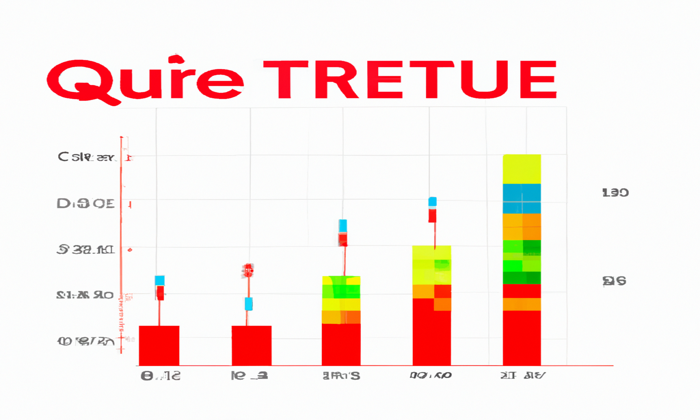In a shocking turn of events, the SIR.trading exploit has left the decentralized finance community reeling after the protocol lost its entire total value locked (TVL) to a significant security breach. As an Ethereum-based platform, SIR.trading has now taken the unprecedented step of offering a $100K bounty to the hacker behind the exploit, inviting them to return the remaining stolen funds. This dramatic plea, made public by the platform’s creator Xatarrer, highlights the emerging challenges of cryptocurrency security and the escalating risks of crypto hacks in 2023. With nearly $400,000 in TVL previously at stake, the fallout from this attack underscores the vital need for robust security measures within the DeFi space. In light of this incident, the SIR.trading bounty serves as both a desperate gambit and a broader call to action for enhanced protections against similar threats in the blockchain ecosystem.
In the ever-evolving landscape of digital finance, the recent incident involving SIR.trading serves as a cautionary tale regarding vulnerabilities in decentralized platforms. Following a catastrophic breach that significantly compromised the total value locked within the system, the developers behind the Ethereum project responded by proposing a substantial reward for the return of the misappropriated assets. This unfolding scenario emphasizes the critical importance of safeguarding cryptocurrency systems and calls into question the overall security protocols that govern such platforms. As more stakeholders begin to recognize similar challenges, it becomes imperative to discuss innovative solutions to prevent future exploits and improve resilience in decentralized applications. The significant implications of the SIR.trading exploit reverberate throughout the crypto community, raising awareness about operational security and the necessity of tactical responses to hacking incidents.
Understanding the SIR.trading Exploit
The SIR.trading exploit is a stark reminder of the vulnerabilities present in the decentralized finance (DeFi) space. This incident, which resulted in the complete loss of the total value locked (TVL) within the protocol, highlights the critical need for enhanced cryptocurrency security measures. The protocol, developed over four years without external funding, succumbed to an exploit that drained its funds completely. Such occurrences are rampant, especially in 2023 where numerous crypto hacks have resulted in substantial losses, making robust security mechanisms paramount for any DeFi project.
In a unique attempt to mitigate the damage, the creator of SIR.trading, Xatarrer, issued a public appeal offering a $100K bounty to the hacker for the return of the funds. This unorthodox plea shows the potential for dialogue between developers and attackers in the crypto ecosystem. It also reflects the dire situations that developers find themselves in after losing significant investments from users and supporters. The broader implications of this exploit resonate within the DeFi community, serving as a call to enhance smart contract audits and security protocols.
The Role of Bounties in Cryptocurrency Security
Offering bounties, such as the $100K bounty by SIR.trading, represents an emerging strategy in the realm of cryptocurrency security. These incentives aim to encourage ethical hackers to disclose vulnerabilities rather than exploit them for personal gain. In this case, the SIR.trading project’s appeal serves as a potential pathway to reforming its financial standing while also highlighting a contemporary approach to security. The establishment of bounties can create a cooperative environment where vulnerabilities are addressed proactively, thus mitigating risks within the decentralized finance landscape.
Moreover, the practice of offering bounties is gaining traction in other sectors of crypto security. As the number of exploits increases, the need for protective measures intensifies. An example can be seen in various DeFi protocols that have recently adopted similar measures, trying to protect against cryptocurrency hacks. By engaging the hacker community in constructive dialogue through bounties, projects can foster a culture of accountability that may lead to safer ecosystems.
Consequences of Exploits in Decentralized Finance
The consequences of exploits in decentralized finance are far-reaching, impacting not only the projects themselves but also the broader cryptocurrency community. The SIR.trading incident illustrates the fragility of trust that underpins DeFi protocols. With over $1.5 billion lost to hacks and scams earlier in the year, the integrity of the entire ecosystem is called into question. Users are often deterred from participating in innovative projects due to fears of losing their investments, which can stunt growth and adoption within the sector.
In the aftermath of such exploits, protocols face the daunting task of regaining user confidence as they attempt to recover lost funds. While SIR.trading’s appeal to the attacker is a step towards recovery, the overall environment is one of skepticism. Stakeholders need assurances that security protocols are improving, and that incidents like the SIR.trading exploit are not commonplace. This necessitates a commitment among developers to prioritize secure coding practices, enhancing overall security in the cryptocurrency ecosystem.
Analyzing the Ethereum Platform Exploit
The SIR.trading exploit serves as a case study in the vulnerabilities that can exist on the Ethereum platform. As one of the premier blockchains for decentralized applications, Ethereum’s complexity and extensive use render it a prime target for malicious actors. The exploit underscores the critical importance of comprehensive smart contract audits and the implementation of best practices in deployment to mitigate potential vulnerabilities. Many protocols launch without sufficient security measures, often leading to catastrophic failures once exploited.
The Ethereum community has witnessed other significant breaches affecting multiple decentralized finance projects, revealing systemic weaknesses in the platform. As security incidents mount in 2023, it is crucial for developers to learn from these exploits and adopt rigorous testing standards. The SIR.trading experience is a clarion call for Ethereum-based projects to initiate collaborative efforts toward enhancing the security of their protocols, ensuring future growth and stability in the decentralized finance sector.
Recent Trends in Crypto Hacks for 2023
2023 has emerged as a troubling year for the cryptocurrency space, marked by a significant rise in security breaches and exploits. The SIR.trading incident is just one of many, reflecting a disturbing trend in which hackers are targeting high-value DeFi projects. With over $1.5 billion reported in losses due to hacks and scams in February alone, the urgency for robust security measures has never been more pronounced. Such losses not only affect the financial standing of these projects but also influence investor confidence across the cryptocurrency landscape.
As we delve deeper into 2023, it becomes clear that the crypto community must evolve to counteract these increasing threats. This involves not only implementing better security protocols but also enhancing user education on best practices in securing personal assets. The resilience of the decentralized finance space depends heavily on the collective efforts of developers, users, and security experts to create an environment that deters malicious activities and promotes safety. The SIR.trading exploit serves as a critical lesson that must galvanize the industry toward more secure practices.
Community Response to SIR.trading’s Exploit
The response from the cryptocurrency community following the SIR.trading exploit has been a mix of sympathy and skepticism. Many users and fellow developers sympathized with Xatarrer’s plight, recognizing the hard work and investment that went into building the protocol. However, the offer of a $100K bounty to the hacker reflects broader concerns about the ethical implications and effectiveness of such appeals. Critics argue that offering bounties could potentially incentivize more hacking, as individuals may see this as an opportunity to exploit vulnerabilities for personal gain.
Additionally, several community members have expressed a need for greater transparency and accountability among DeFi projects. Incidents like the SIR.trading exploit have rekindled discussions about the importance of security audits and the standard practices needed to ensure the safety of user funds. The conversation has sparked initiatives aimed at promoting better security protocols across projects in the decentralized finance space, indicating a growing recognition of the importance of community-driven solutions to reduce exploits.
The Impact of DeFi Exploits on Investor Confidence
The increasing frequency of exploits within decentralized finance protocols, exemplified by the SIR.trading incident, significantly impacts investor confidence. When major projects suffer breaches, it creates an atmosphere of uncertainty for current and potential investors. This erosion of trust can lead to decreased investment, heightened scrutiny over projects that are perceived as vulnerable, and a subsequent slowdown in the growth of the DeFi ecosystem. The cumulative effect of these exploits propels a cautious perspective among investors, who may shy away from promising projects due to fears of security vulnerabilities.
To restore trust, DeFi projects must prioritize transparency and proactive measures in addressing security weaknesses. Building a reassured investor base can be accomplished through regular security audits, not only to identify vulnerabilities but also to communicate results effectively to potential users. The industry must collectively work towards establishing robust safety nets to reassure investors that their funds are secured, thereby revitalizing confidence in the decentralized finance landscape.
The Need for Improved Smart Contract Audits
The vulnerability demonstrated by the SIR.trading exploit emphasizes an urgent need for improved smart contract audits across decentralized finance protocols. As DeFi continues to innovate, the complexity of smart contracts often makes them susceptible to unforeseen exploits. Conducting thorough audits by reputable security firms can mitigate the risks associated with deploying uncovered or misconfigured contracts. In this instance, enhanced auditing measures may have revealed critical vulnerabilities that ultimately led to the devastating loss of funds.
In addition, community awareness regarding the importance of regular audits needs to be heightened. Education should focus on the necessity of initiating audits as a continuous process rather than a one-time event before launching a project. By fostering a culture of diligence and responsibility in security practices, the DeFi community can take significant strides towards preventing exploits and ensuring the overall safety of cryptocurrency investments. The SIR.trading incident illustrates not just a failure in security, but also an opportunity for the entire ecosystem to learn and evolve.
Fostering Ethical Hacking in Crypto Security
The SIR.trading exploit brings to light the concept of ethical hacking within the cryptocurrency space. By offering a bounty for the return of funds, Xatarrer is attempting to engage in a proactive dialogue with hackers, potentially transforming adversaries into allies. This approach reflects a broader trend of fostering ethical hacking as a means to enhance security within decentralized finance projects. Ethical hackers can reveal potential flaws and help to secure protocols before malicious actors can exploit them.
Encouraging ethical hacking initiatives can greatly benefit the DeFi ecosystem by creating a collaborative environment where developers and hackers work together toward a common goal: securing funds and improving overall protocol integrity. Involving the community in identifying vulnerabilities provides an avenue for greater assurance to investors that their funds are being safeguarded. As the landscape of crypto security continues to evolve, establishing frameworks that reward ethical hacking will be essential in combating the rising tide of exploits and fostering trust in decentralized finance.
Frequently Asked Questions
What happened in the SIR.trading exploit incident?
The SIR.trading exploit occurred when the decentralized finance protocol lost its entire total value locked (TVL) of approximately $400,000 to an attacker. In an unusual move, the project’s creator, Xatarrer, offered a $100K bounty to the hacker for the return of the stolen funds.
How much bounty did SIR.trading offer after the exploit?
SIR.trading offered a $100,000 bounty to the attacker, which is about 28% of the stolen funds, as an incentive to return the remaining cryptocurrency, emphasizing a desire to avoid legal action.
Why did SIR.trading create a bounty for the hacker?
After losing all its TVL to the exploit, SIR.trading’s creator believed that offering a bounty could potentially help recover funds for users, stating that if the hacker retains all the funds, it would jeopardize the project’s chance of survival.
What is the significance of the SIR.trading exploit for cryptocurrency security?
The SIR.trading exploit highlights ongoing vulnerabilities in decentralized finance platforms. It adds to the growing list of crypto hacks in 2023, emphasizing the need for improved security measures within the cryptocurrency ecosystem.
How did the funds stolen in the SIR.trading exploit get transferred?
After the SIR.trading exploit, the stolen cryptocurrency was sent through Railgun, a privacy protocol that obscures transaction trails, making it more challenging to trace the funds.
What are the implications of SIR.trading’s response to the exploit?
SIR.trading’s appeal to the hacker to return the funds while offering a bounty reflects desperation and illustrates the ethical dilemmas faced in decentralized finance when dealing with exploits and vulnerabilities.
What does the SIR.trading exploit mean for the future of DeFi?
The SIR.trading exploit serves as a cautionary tale for the decentralized finance sector, reinforcing the need for robust security protocols to safeguard user funds against potential crypto hacks.
How does the SIR.trading exploit compare to other crypto hacks in 2023?
The SIR.trading exploit adds to a troubling trend in 2023, which has seen significant losses due to various crypto hacks, including a notable incident involving zkLend that resulted in over $9 million in losses.
What efforts are being made to improve security following the SIR.trading exploit?
In response to incidents like the SIR.trading exploit, ongoing debates in the cryptocurrency community emphasize enhancing security measures, auditing smart contracts, and fostering ethical hacking practices to protect users.
Will SIR.trading survive after this exploit?
The future of SIR.trading remains uncertain after the exploit, as its creator has indicated that retaining all stolen funds would make it impossible for the project to continue without community support.
| Key Point | Details |
|---|---|
| Incident | SIR.trading lost its entire total value locked (TVL) to an exploit. |
| Bounty Offered | A bounty of $100K was offered to the attacker for returning the remaining funds. |
| Creator’s Appeal | Creator Xatarrer made an on-chain appeal to the hacker on March 31. |
| Vulnerability Recognition | The exploit was described as being almost beautiful due to the skill involved. |
| Previous Performance | The protocol had a TVL of around $400,000 before the exploit. |
| Impact of the Exploit | The incident adds to the growing list of crypto security incidents in 2023. |
| Future Survival | Xatarrer emphasized that keeping 100% of the funds would jeopardize SIR.trading’s survival. |
Summary
The SIR.trading exploit highlights significant vulnerabilities in the decentralized finance (DeFi) sector. After losing its entire total value locked (TVL) to a malicious attack, SIR.trading’s creator offered a $100,000 bounty to the attacker to recover the remaining funds. This incident underscores the pressing need for improved security measures within the crypto landscape, especially as incidents of hacks and scams continue to rise, causing substantial financial losses for investors. The plea from Xatarrer serves as a reminder of the risks associated with DeFi projects and the importance of vulnerability disclosure.
The SIR.trading exploit has sent shockwaves through the cryptocurrency community, highlighting the vulnerabilities inherent in decentralized finance (DeFi) protocols. After losing its entire total value locked (TVL) to a malicious attack, SIR.trading has taken an unconventional approach by offering the attacker a $100K bounty for the return of the remaining funds. This bold appeal, made by the Ethereum-based platform’s creator, Xatarrer, underlines the desperate reality many projects face in a landscape plagued by crypto hacks in 2023. The incident not only raises concerns about cryptocurrency security but also sheds light on the sophistication of these exploits, which can dismantle years of hard work in mere moments. As this tragic saga unfolds, the discussion around the importance of robust security measures in the blockchain space has never been more urgent.
In the wake of significant challenges faced by digital asset platforms, the recent security breach of SIR.trading serves as a stark reminder of the precarious nature of cryptocurrency ecosystems. This incident, where a substantial amount of funds was stolen, has led to urgent discussions about vulnerabilities in decentralized finance systems and their implications for users’ assets. The creator’s unprecedented offer of a bounty to the hacker reflects the dire circumstances that many DeFi projects find themselves in, emphasizing the need for enhanced protective measures against potential exploits. As the industry witnesses a surge in attacks, including Ethereum platform exploits, it is crucial for stakeholders to prioritize security and implement effective countermeasures. Such events underscore the necessity for all crypto projects to remain vigilant and accountable as they navigate this rapidly evolving landscape.














